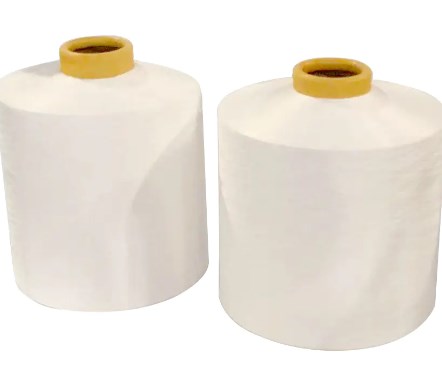International Quality Standard 300D96F BLACK HIGH ELASTIC Polyester Yarn for Sea...
See DetailsIn the modern textile industry, high intermingle yarn is gradually becoming a representative of high-performance yarns. It not only achieves innovation in fiber structure but also demonstrates superior performance in subsequent weaving and knitting processes. With technological advancements and increasing market demand, high intermingle yarn has become an important material choice for textile manufacturing, functional fabric development, and the premiumization of apparel.
Definition and Characteristics of High Intermingle Yarn
High intermingle yarn refers to yarn processed using a high-density interlacing process. This type of yarn has a more compact fiber arrangement and significantly enhanced inter-fiber bonding, thus endowing the yarn with excellent mechanical properties and stability. Compared to traditional yarns, it offers significant improvements in abrasion resistance, tensile strength, and the overall hand feel of the fabric.
Another important characteristic of high-intermingle yarn is fiber uniformity. During production, by precisely controlling the distribution and interlacing degree of fibers, the yarn maintains consistent physical properties under different weaving conditions. This not only benefits fabric uniformity but also provides a more stable foundation for dyeing and finishing processes.
Manufacturing Process and Technological Advantages
The production of high intermingle yarn typically relies on modern spinning technologies, including high-precision drawing, air-jet interlacing, and precision drafting. These technologies create a tightly interwoven structure within the yarn, enhancing its strength and resistance to deformation. Simultaneously, the yarn's flexibility and stability are optimized, allowing for smoother operation on high-speed weaving or knitting equipment and reducing yarn breakage and downtime.
Highly interwoven yarns exhibit excellent compatibility in fiber blends. Whether natural, synthetic, or functional fibers, they maintain a good fiber distribution during the interlacing process. This technological advantage not only enhances the overall performance of the yarn but also provides broad application prospects for high-end apparel, functional fabrics, and industrial textiles.

Application Potential in Textiles
The applications of high intermingle yarn in textiles are diverse and specialized. Its high strength and excellent stability make it ideal for high-performance and functional fabrics. In sportswear, outdoor gear, and protective equipment, highly interwoven yarns effectively enhance fabric durability and comfort while maintaining good breathability and hand feel. It also performs exceptionally well in knitted fabrics. Due to its uniform yarn structure, knitted garments exhibit superior elasticity and resilience, allowing clothing to maintain its shape and fit even after long-term wear. This characteristic is particularly appealing to high-end apparel brands and functional textile manufacturers.
Economic and Environmental Value In the global textile industry's trend towards high efficiency and sustainable development, the production process of high intermingle yarn is particularly important. By optimizing fiber arrangement and reducing yarn breakage, it not only improves production efficiency but also reduces textile waste. Simultaneously, high-intermingle yarn enables energy conservation and emission reduction during weaving, providing a new solution for environmentally friendly textile production.
From an economic perspective, the high-performance characteristics of high-intermingle yarn extend fabric life and reduce subsequent maintenance and replacement costs. This combined advantage gradually gives it a high-value-added competitive edge in the market, driving textile companies towards high-end and differentiated development.
With continuous advancements in textile technology, the application areas of high intermingle yarn will further expand. In the future, its role in smart textiles, functional fabrics, and high-performance industrial fabrics will become even more prominent. By combining with nanotechnology, functional fibers, and renewable materials, highly interwoven yarns are expected to achieve higher performance indicators, providing solid support for innovation in the textile industry.
Meanwhile, with the increasing global demand for high-quality, sustainable textiles, the market potential of highly interwoven yarns continues to grow. For textile companies, mastering advanced interwoven yarn technology is not only key to enhancing product competitiveness but also an inevitable choice to adapt to the industry's green and high-end development.